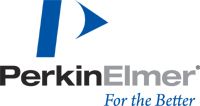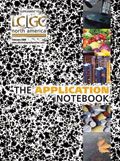GC–MS Screening for Melamine Adulteration in Baby Formula and Dairy Products
The Application Notebook
Melamine is an industrial chemical with a high nitrogen content that can cause kidney stones and lead to renal failure. In some instances, melamine has been added to baby formula and dairy products as a substitute for protein. This paper presents an efficient and definitive gas chromatography–mass spectrometry (GC–MS) method to identify melamine and related compounds based on the released US Food and Drug Administration (FDA) method.
Melamine is an industrial chemical with a high nitrogen content that can cause kidney stones and lead to renal failure. In some instances, melamine has been added to baby formula and dairy products as a substitute for protein. This paper presents an efficient and definitive gas chromatography–mass spectrometry (GC–MS) method to identify melamine and related compounds based on the released US Food and Drug Administration (FDA) method.
Experimental
A 0.5 g sample is sonicated for 30 min in 20 mL of 10:40:50 (by volume) solution of diethylamine (DEA), water and acetonitrile to extract the melamine. The sample is centrifuged for 10 min at 3500 RPM to settle fine particulates from the sample matrix. The supernatant fluid is filtered and evaporated. The dry sample is reconstituted in an autosampler vial with 200 μL of pyridine and 100 μL of a 0.5 μg/mL internal sample solution. Melamine and related compounds are converted to trimethylsilyl (TMS) derivatives with the reagent consisting of bis(trimethylsilyl)trifluoracetamide (BSTFA) with 1% trimethylchlorosilane (TMCS). 200 μL of this solution is added and the sample is incubated at 70 °C for 45 min.
A PerkinElmer® EcoAnalytixe™ Melamine Analyzer, based on Clarus® GC–MS technology with a PerkinElmer Elite-5MS column (30 m × 0.25 mm × 0.25 μm) was used to analyze the sample. The GC used a programmable split/splitless injector with a PSSI port type, isothermal at 280 °C. The 0.5 μL injection volume matched the solvent vapor expansion volume with the inner volume of the 2 mm i.d. inlet liner. The mass spectrometer used a 280 °C GC inlet line temperature, 230 °C ion source temperature, 50–450 u full scan range and 0.2 second full scan time.

Figure 1: Standard chromatogram of TMS-derivatized melamine and related compounds spiked at 0.1 µg/mL.
Results
The data quality checks used in this method include analysis of the pyridine solvent and derivatization reagent (solvent blank); analysis of the unspiked solvent (method blank); and a matrix spike-sample at both the high and low levels. Figure 1 shows a chromatogram of the low standard. A number of protein materials were analyzed including the rice-protein samples shown in Figure 2. Melamine was detected at a low level compared to the analogue and matrix peaks. The optimized GC method presented here completely resolved melamine from the surrounding peaks, allowing for easy identification. Mass spectral comparison between standard spectra and experimental spectra of melamine confirmed the peak identity.

Figure 2: Chromatogram of rice protein powder exhibiting adulteration; large peaks correspond to melamine and its 4 analogue compounds.
Conclusions
Recent instances of adulteration of baby formula and dairy products with melamine and related compounds have created the need for more detailed testing of protein-based food and feed ingredients. This paper presents sample-preparation and instrumentation techniques for the analysis of melamine and related compounds. The PerkinElmer EcoAnalytix Melamine Analyzer detects adulteration of the low-level spike in full-scan mode, demonstrating exceptional sensitivity for routine screening of complex matrices.

PerkinElmer Inc.
940 Winter Street, Waltham, MA 02451
tel. (800)762-4000, (203)925-4602, fax (203)944-4904
Website: www.perkinelmer.com


.png&w=3840&q=75)

.png&w=3840&q=75)



.png&w=3840&q=75)



.png&w=3840&q=75)














